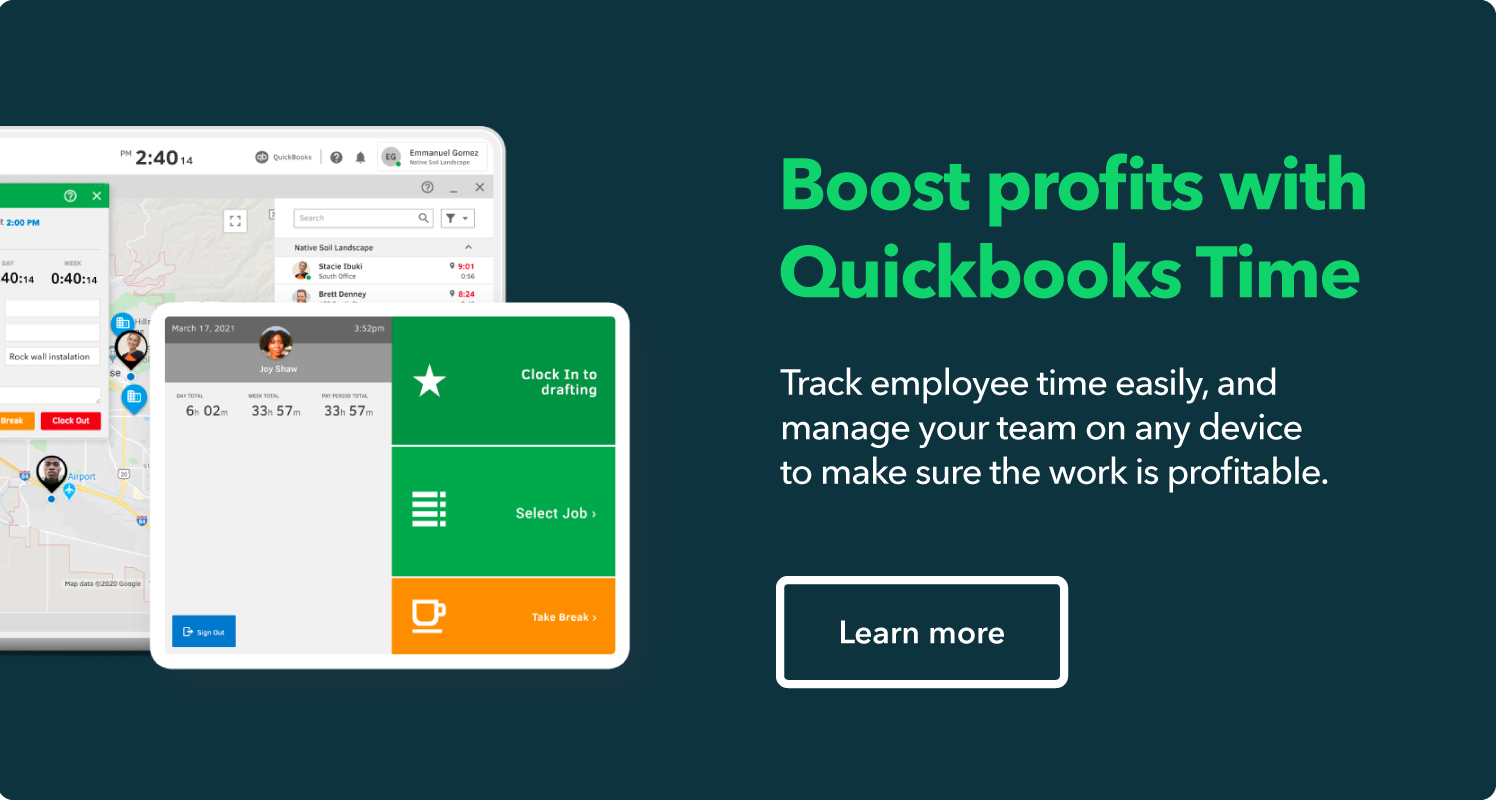4 ways time tracking grows your business
Remember, time is money. Tracking employee time has a positive impact on more than just your payroll reports. Time tracking data can help you make smarter business decisions like staffing, prioritization, and pricing. Here’s how:
1. Improve productivity
Accurate time data gives you valuable insights into employee performance, workloads, processes, and project prioritization. Over time, you can use your time tracking data to identify and prioritize high ROI projects, optimize employee work schedules, and pinpoint inefficiencies in your processes or productivity gaps—helping your business run more smoothly and increasing employee productivity across the board. Plus, employee time data can help you determine where employees might benefit from additional training, so you can better allocate your employee development time and resources.
2. Increase employee retention
That improved productivity benefits your business in more ways than one. Productive employees are engaged employees, and engaged employees are more likely to work for your business longer. Improved employee retention can save your business the time and money required to scout, hire, and train new employees. You’ll retain all the enterprise knowledge your current employees already have, resulting in better customer experiences and a well-oiled business.
3. Make data-backed decisions
Is it time to hire a new employee? Should you raise your rates or prices? Without time tracking data, these questions might be difficult to answer objectively. But with time data at your fingertips, you can easily see if workloads have increased (time to hire a new team member!) or if certain projects are taking too long to complete (time to look for inefficiencies or raise project rates to accommodate for the added time).
4. Get paid more
People are more likely to underestimate the amount of time spent on a project than overestimate—this is called the planning fallacy. And if you run a small business, the planning fallacy could be costing you money. Accurate time tracking helps your business get paid exactly what it’s owed by taking the planning fallacy out of the equation. Improve your quotes and estimates and get paid more through more accurate billing and invoicing.
3 ways to get employees excited about time tracking
By now you’re obviously excited about improving productivity, increasing profits, and growing your business with employee time tracking. Your employees will be excited, too, once they realize tracking time is as simple as pressing a button, can help them get paid more, and gives them more control over their workload and professional development. You can get them there in three simple steps:
1. Make tracking time easy
No one wants to carry around a punch card or deal with a spreadsheet to track their time—these systems aren’t very accurate, anyway. Minimize friction by using a modern time tracking solution like QuickBooks Time, allowing employees to quickly and easily clock in and out from a phone or desktop app.
2. Train employees to track time
Set your employees up for success by training them how to track time from the get-go. Training employees to track time not only helps avoid timesheet errors and incorrect tracking, but gives employees the confidence to take time tracking into their own hands. The more they understand the process, the more likely they are to buy-in.
3. Emphasize the benefits
Micromanagers of yore may have tainted the idea of time tracking for your team. When broaching the idea of time tracking, start with the benefits. Time tracking will help you evenly distribute the workload, identify when it’s time to hire additional help, and build accurate invoices. On employees’ end, tracking time ensures they get paid correctly, including overtime and paid time off. Show them that it’s less about monitoring their time and more about improving processes, getting accurate data, and better serving your customers.
Time data fuels business growth
Pricing strategies, customer acquisition, financial forecasting, and more all contribute to business growth, but don’t forget to include employee time tracking that equation. Time data is just one of the many resources you can include in your arsenal of tools to help your business grow.
Through improved productivity, prioritization, and billing and invoicing, employee time tracking might be just the thing you need to make informed decisions for your team and your growing business—decisions that could catapult you to the next level.
















